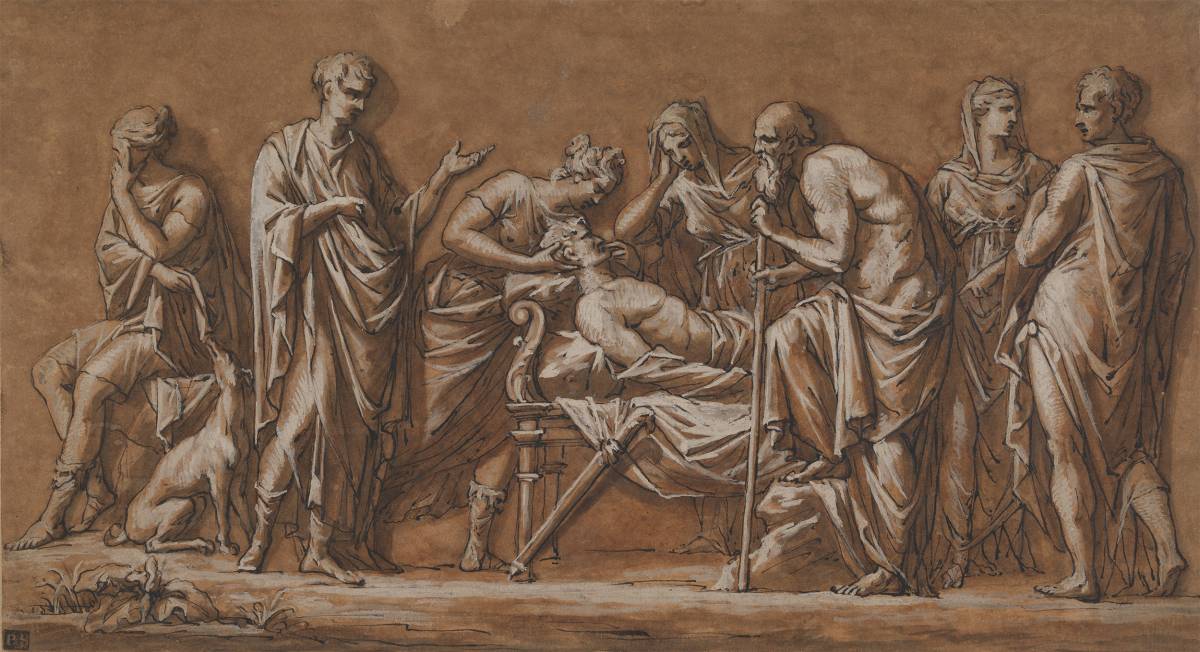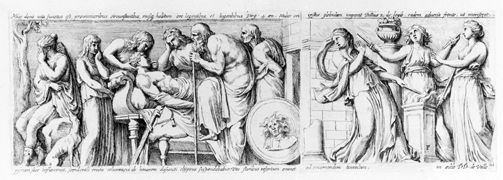The study here highlights Rysbrack's sculptural approach to drawing, for he has borrowed heavily from the left-hand section of plate 21 from Perrier's Icones et Segmenta (Rome 1645). It is far from a straightforward copy, however, for even in the central grouping around Meleager's body which are based on Perrier's etching, Rysbrack has varied the heads of the two female mourners and simplified the bed. The right section of the relief is omitted altogether, in which Meleager's mother condemns him to death by flinging a cursed piece of wood onto the fire whose destruction, it had long previously been prophesied, would cause Meleager's death. Rysbrack's introduction of a male figure on the left, might be seen as a replacement for the fire scene, if we imagine that he is discoursing on the fulfilment of the prophecy.
Eighteenth-century sculpture in England was fundamentally shaped by models from the ancient world. The most famous examples were studied in Rome and widely communicated through prints, notably by the French artist François Perrier in his two books of sculpture, Segmenta nobilium (Rome 1638) and Icones et Segmenta (Rome, 1645). Rysbrack's practice as an architectural sculptor was informed by ancient Roman reliefs, which he adapted for use in domestic settings such as on fireplace surrounds. This design may relate to the central tablet of a fireplace, but the fact that it was owned in the eighteenth century by the painter Paul Sandby points to the demand for Rysbrack’s drawings by contemporary collectors and dealers.



